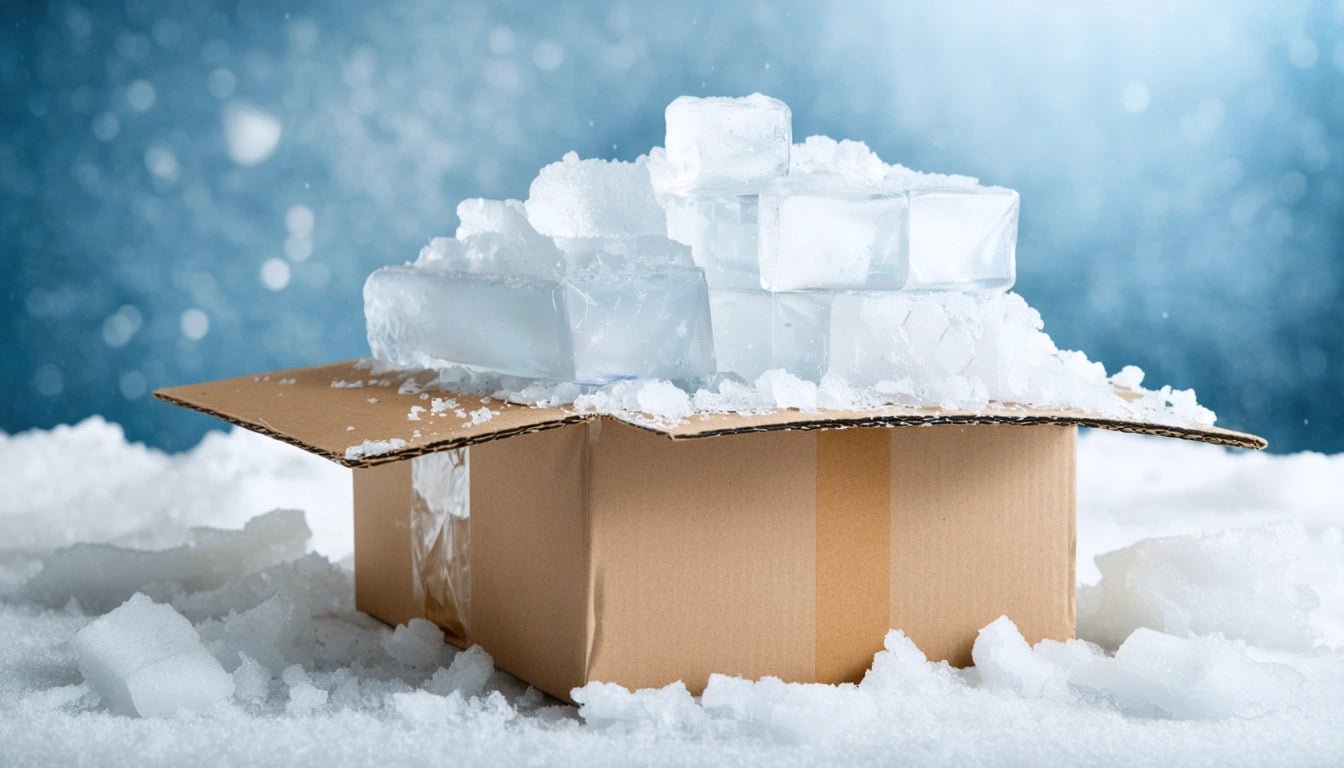Table of Contents
- Understanding Temperature Requirements for Cold and Frozen Shipping
- Best Insulation Materials for Temperature Control
- Effective Packaging Techniques for Cold Items
- Shipping Carrier Options and Cost Comparison
- Special Considerations for Different Food Types
- Cost-Saving Strategies Without Compromising Quality
Guide to Shipping Frozen and Cold Foods Affordably
Shipping temperature-sensitive food items presents unique challenges that require specific packaging solutions and careful planning. Whether you're a small business owner shipping artisanal ice cream or sending homemade frozen meals to family members, understanding how to ship frozen food properly ensures products arrive in optimal condition while managing costs effectively.
Understanding Temperature Requirements for Cold and Frozen Shipping
Different food items require specific temperature ranges during transit:
- Frozen foods: Must maintain temperatures below 0 °F (-18 °C)
- Refrigerated items: Typically need 32-40 °F (0-4 °C)
- Cold but not frozen items: Can tolerate slightly higher temperatures around 45-55 °F (7-13 °C)
The first step in determining how to ship cold food properly is identifying which category your items fall into. This affects everything from packaging materials to shipping speed and carrier selection.
Best Insulation Materials for Temperature Control
Effective insulation is crucial when learning how to ship refrigerated items. Several options exist, each with different cost implications:
Styrofoam Coolers
These traditional insulators provide excellent temperature control but can be bulky and less environmentally friendly. They typically maintain temperatures for 24-48 hours depending on thickness.
Insulated Liners
Reflective bubble wrap or foil liners are more affordable and space-efficient alternatives. While not as effective as styrofoam for extended periods, they work well for overnight shipping of moderately cold items.
Insulated Mailers
For smaller items requiring less extreme temperature control, insulated padded mailers offer a cost-effective solution. These are particularly useful when considering how to ship bread or similar items that need protection from heat but don't require freezing temperatures.
Effective Packaging Techniques for Cold Items
Proper assembly of your cold shipping package is as important as the materials themselves:
Cooling Elements
Dry ice and gel packs are the most common cooling elements:
- Dry ice: Maintains temperatures below freezing but requires special handling and carrier declarations
- Gel packs: More versatile and safer to handle but may not maintain freezing temperatures as long
For those wondering what is the cheapest way to ship frozen food, gel packs often provide the best balance of effectiveness and affordability for shorter transit times.
Layering Strategy
Proper layering creates an effective temperature barrier:
- Line your outer box with insulation material
- Add a layer of refrigerant (dry ice or frozen gel packs)
- Place food items in the center, ideally pre-frozen solid
- Add another layer of refrigerant on top
- Complete with a final insulation layer before sealing
This technique creates a cold core that gradually warms from the outside in, maximizing transit time. Many specialized businesses use carefully designed packaging solutions that integrate these principles for optimal temperature control during shipping.
Shipping Carrier Options and Cost Comparison
When determining how can you ship frozen food affordably, comparing carrier options is essential:
USPS
Often the most economical for lighter packages under 20 pounds. Priority Mail Express provides 1-2 day delivery nationwide, making it suitable for many cold shipping needs. However, USPS has restrictions on dry ice shipments.
UPS
Offers specialized services for perishables and accepts dry ice shipments with proper declaration. Their Next Day Air and 2nd Day Air services work well for frozen items but come at premium prices.
FedEx
Similar to UPS with cold shipping capabilities. Their FedEx Standard Overnight and 2Day services are reliable for perishables. FedEx also offers specialized cold shipping boxes for an additional fee.
When comparing carriers, consider both transit time and package dimensions, as dimensional weight often applies to insulated packages. Shipping large or bulky packages can significantly increase costs regardless of actual weight.
Special Considerations for Different Food Types
Baked Goods
When learning how to ship bread and baked items, temperature control is less critical than moisture control and physical protection. Use breathable packaging to prevent condensation while ensuring structural integrity.
Meats and Seafood
These highly perishable items require the strictest temperature control. They must remain frozen throughout transit and typically need dry ice and expedited shipping, making them among the most expensive items to ship.
Dairy Products
Items like cheese and butter need consistent refrigeration but not necessarily freezing. Gel packs are usually sufficient, but transit times should be kept under 48 hours.
For more specialized guidance on perishable shipping, resources like this guide to mailing perishable items provide food-specific recommendations.
Cost-Saving Strategies Without Compromising Quality
Shipping frozen and cold items doesn't have to break the bank. Here are practical strategies to reduce costs:
- Ship early in the week to avoid weekend delays that might require additional refrigerant
- Optimize package dimensions to minimize dimensional weight charges
- Consider regional shipping services for shorter distances rather than national carriers
- Use thermal testing to determine the minimum amount of refrigerant needed for your specific product
- Bundle multiple items in a single shipment when possible to share cooling costs
For businesses shipping cold items regularly, investing in thermal packaging that can be returned and reused offers significant long-term savings, similar to strategies used when shipping other reusable items.
By understanding temperature requirements, selecting appropriate materials, and optimizing carrier selection, you can successfully ship cold and frozen foods without excessive costs. The key is finding the balance between adequate temperature control and efficient shipping methods that meet your specific product needs.



















